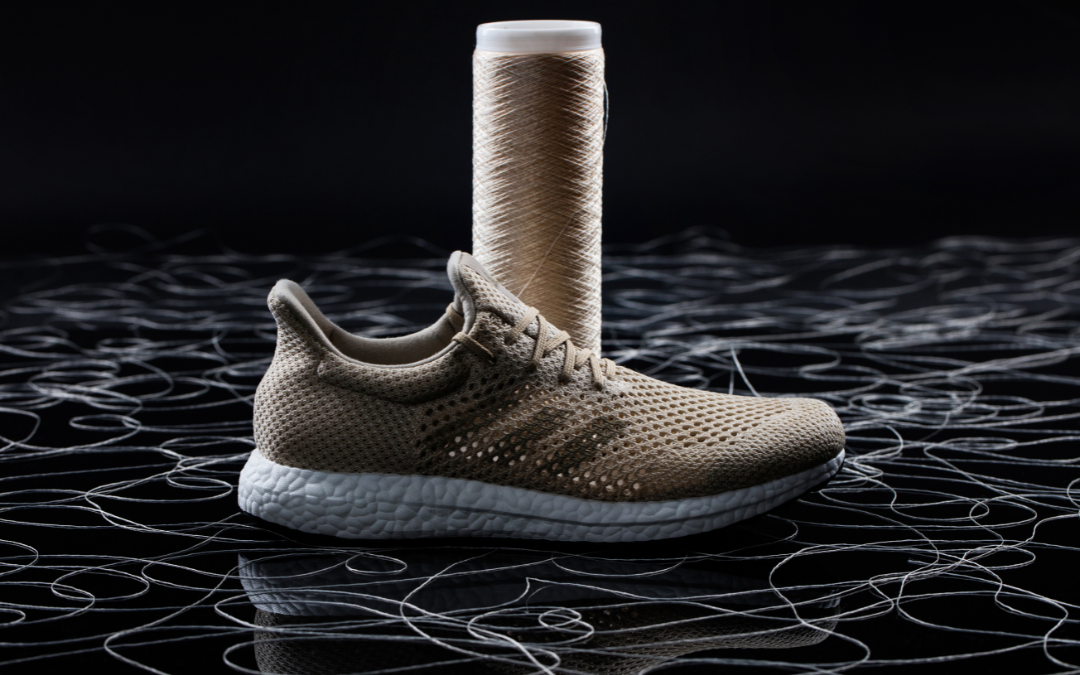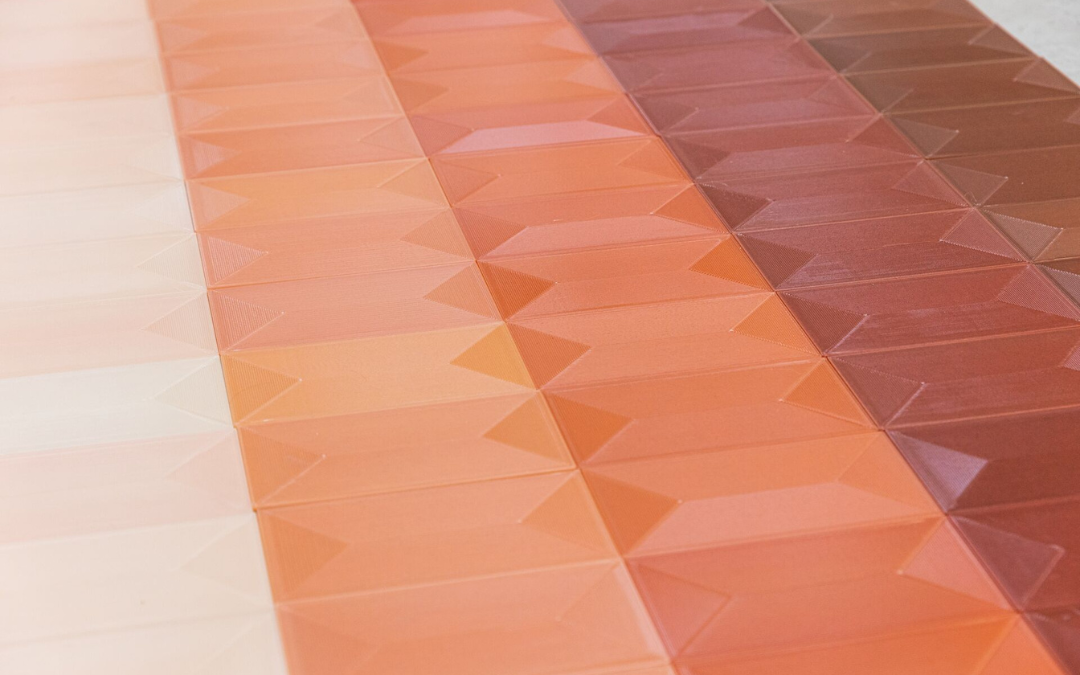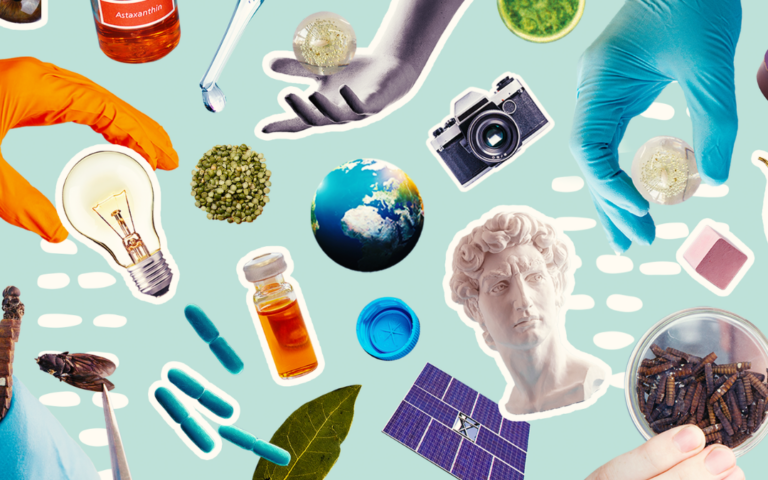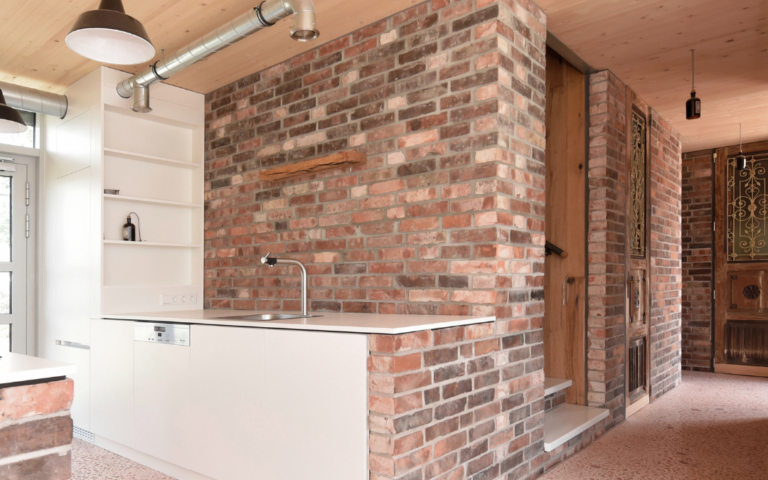Biofabrication
Material of the future
by Sarah Dorkenwald
Renewable raw materials such as plant fibers, microalgae, fungal mycelia or bacteria, and organic residues from the food industry like husks and shells can now be transformed into innovative and fully functional materials through technical processes. With their comparable properties, functions and aesthetics, they offer a promising alternative to conventional fossil fuel-based materials, especially with regard to recyclable product solutions. It is designers in particular who have provided important impetus in biobased material development with their eagerness to experiment and explore. Their ability to both break new ground in materials research and to keep an eye on the requirements of production, industry and the market, as well as to think up user-centered applications, contribute important foundations for the development of biofabrication. Science and industry, in conjunction with design, have developed forms of production and uses for biomaterials that increasingly tap into nature’s biodiversity for the use of materials.
Organic raw materials — utilizing natural biodiversity
For example, Italian designer Maurizio Montalti has spent years of self-initiated research developing a process in which fungal spores, known as mycelia, colonize a molded substrate of industrial-agricultural waste in a controlled process until their growth is stopped by heating. The result is velvety soft, eggshell-colored elements that have a unique typology and material aesthetic.


With his start-up Mogu, he has brought this form of material production to market maturity as acoustic panels, among other things. But Montalti isn’t just exploring concrete applications for mycelium-based materials. With shoe designer Liz Ciokajlo, he has designed a Mars boot commissioned by the Museum of Modern Art New York, speculating on whether a future mission to Mars could grow the everyday items needed there from fungal mycelia during the journey.
Munich-based entrepreneur Sebastian Thies has also embraced nature to develop a sustainable sneaker. He sells vegan shoes made of mushroom leather with his nat‑2™ brand. The material is made from the tinder tree fungus. The basic material for this is supplied by Berlin designer Nina Fabert. With her label Zvnder, she developed a rather elaborate process in which the tinder fungus, which grows as a parasite on weakened trees such as birch and beech, as well as on dead wood, is dried, peeled and then processed by hand into a leather-like material. As a composite of organic textiles and mushroom leather, it is used in Thies’ sneaker models.
In addition to not using animal skin, tinder sponge has other positive properties: for example, its use is chemical-free and it has an antiseptic and antibacterial effect. Combined with other innovative, high-quality materials such as cork insoles, organic cotton terry cloth, microfiber velour made from recycled PET bottles and genuine rubber soles, the tree fungus gives the shoes their own unmistakable style.
Living materials from microorganisms
The development of production processes based on microorganisms and enzymes is also opening up new approaches for the manufacture of materials. In this context, fermentation processes are being adopted, such as those used in the production of alcohol, dairy products or kombucha beverages. This complex conversion of substances can now be used for the targeted and controlled production of materials.
AMSilk from Bavaria researched a process in which genetically modified microbes produce spider silk with the specific properties of a spider’s thread. The material produced from bacteria is light and strong and at the same time biodegradable and can be produced in a resource-saving way. In the future, these biotechnologically produced materials from living matter, which can be programmed with specific properties, should offer alternatives to materials of animal origin and replace other natural resources that are renewable but often produced in agro-industrial monocultures, thus harming biodiversity and depleting finite resources.
Waste as a natural resource
Things get particularly interesting when organic residues from agriculture are used to produce biobased materials. There are now many new technical approaches that are ready for the market, such as bags made from Piñatex, a nonwoven fabric made from pineapple leaf fibers, QMilk, a textile fiber made from milk waste from the food industry developed by microbiologist and fashion designer Anke Domaske, and leather made from fish skins by Femer, a company owned by Frenchwoman Marielle Philip.
But coffee grounds and rice husks can now also be processed into textiles. These new material innovations are valuable in driving forward a “circular economy” in which, in the best case scenario, no more waste is produced at all, as residual materials are not landfilled or incinerated, but completely recycled into the production cycle.
The sea as alternative production site
Algae are also considered to have many environmentally friendly potentials. They can be used in a variety of ways without occupying land that is already used for food production. The raw material is interesting from an ecological point of view because it grows quickly and absorbs CO2 in the process. Luma Atelier from Arles cultivates microalgae in the sea for the production of colorful shapely algae tiles, which means that a bio-based product is also subject to a more ecologically advantageous production process. The algae-enriched bioplastic, from which the tiles are molded using an industrial injection process, can be used as wall coverings in both interior and exterior applications.
Luma Atelier will also be represented in the bayern design exhibition Material+, which can be seen in cooperation with the Neues Museum Nürnberg from April 2022.
Designers take on a key role
When it comes to bringing novel materials to a broad audience, design plays a key role. Suzanne Lee, who is responsible for design at the New York-based company Modern Meadows and also founded the international industry meeting “Biofabricate” for biotechnologies at the interface between design and industry, also works at the interface between development and application. Modern Meadows works with collagen fibers derived from animal cells and grows a leather-like material from them in the lab under the brand name ZOA.
Like polymers derived from spider silk protein, this DNA-based tissue cultivation is one of the latest developments in materials research. British fashion designer Stella McCartney has already designed a sunny yellow dress made of this so-called spider silk, and the outdoor label The North Face has taken advantage of the unusual material properties to launch a parka that is both lightweight and extremely robust. And the Bavarian company adidas also makes sneakers from the yarn, saving up to 15% in weight compared to conventional sneakers.
You can participate and co-speculate about biomaterial futures in the Polyphonic Futures workshops by artist and designer Veronica Ranner. Ranner is also a professor at the Nanyang Technological University in Singapore, where she researches the potential of bio-digitality and biomaterials. In her Singapore studio and Munich, she pushes the boundaries of biodesign practices and research by examining reverse-engineered silk (“re-liquefied” silk). As this material is one of the few existing smart materials, it will not be rejected by human tissue but, instead, completely absorbed. Furthermore, due to its unique material topology, it can be utilised, e.g. as a bone and tissue substitute and a bridging biosensor that enables digital interfacing with the body. These qualities open up a whole new spectrum of wearable or implantable devices.









